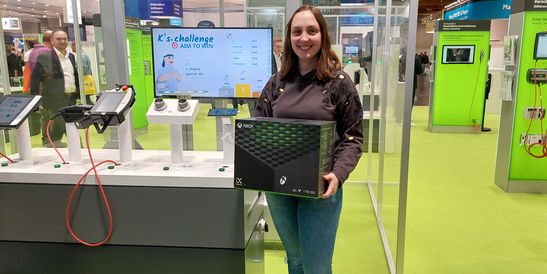The reasons HMIs fail and the lessons to be learned
- HMI
- 15.11.2021
- Reading Time: {{readingTime}} min
- Share Article

Contents
What are the requirements for today’s HMIs to ensure that they provide users with real added value? Only through observing and recognizing the way people interact with the machine interface is it possible to devise an intuitive, effective and simple design for this interface.
But how do we know if an HMI is successful in its practical application and provides actual help to users that allows them to successfully communicate with machines, systems and devices and to achieve an efficient and cost-effective production process? What it ultimately comes down to is the greatest possible user-friendliness; it is crucial for the commercial success of the HMI.
Learning from mistakes
A good HMI is tailored to fit the user’s individual needs and must meet all requirements regarding user-friendliness. The latest and greatest technology is useless if it makes operation too complicated and not intuitive enough; not only does the user become fed up with the product – operation becomes more complex and more difficult instead of easier.
This blog article presents examples of HMIs that failed and analyzes the mistakes and the lessons to be learned.
Dual screen fails to achieve simplification
When the Chinese ZTE Corporation marketed a new product in 2017, it was anything but user-friendly. The idea of the dual screen of the Axon M smartphone was to provide greater convenience to users through an improved, larger display.
However, the gap between the two screens when held upright did not provide any benefits. On the contrary, the display on the dual screen wasn’t more convenient, and it wasn’t user-friendly. To make matters worse, the additional screen made the Axon M heavier than standard smartphones as well as relatively thick. The product had missed the mark.
Operator errors caused by touch screens
2017 saw one of the worst accidents at the US Navy. After multiple collisions with civilian vessels, a comprehensive investigation concluded that on the bridges of many US Navy vessels, crews were unable to cope with the operation of the touch screens. The ensuing operator errors cost several people their lives.
It was recognized that the touch screens for controlling the ships were far too complicated, resulting in an increased error rate when operated by the crews. The crew wished to return to classic operating controls like switches, dials and keyboards.
The following HMI issues may have played a role in these accidents:
- The input device doubles as the output device – important information may be hidden from sight by the hand making inputs.
- The screen does not provide any mechanical fixed points (unlike a switch, for example); in case of sudden movements, fingers can slide over the screen and trigger unintended actions.
- If fingers are wet or dirty, errors can be introduced during touch screen operation, or it may become impossible to operate the touch screen.
- The screen demands intense concentration on the part of the user because it realizes a broad range of different functions, and the positions for tapping can shift and move.
Failures can frequently lead to something new and better, because without failure there is no advancement.
One of the first steps towards VR failed
Those who were children in the 1980s or 1990s probably remember the NES (Nintendo Entertainment System) game console. But who remembers the Power Glove? It was a data glove worn on the right arm as controller. It used acoustic sensors to detect the player’s movements.
We can certainly consider this glove one of the first steps towards virtual reality (VR) in the gaming industry, even though it failed to establish itself on the market. Just one year after its release, the product disappeared from store shelves.
This was not last due to the fact that it was programmed for just two video games, which didn’t allow it to reach the broad audience of NES users. The greatest problem, however, was the inadequate detection of the player’s movements. This made game control too imprecise, effectively making the games impossible to play.
At the time, this was certainly fascinating and innovative for gamers. However, Nintendo with their video game know-how were not themselves involved in developing and marketing the Power Glove. Instead, this was done under license. The Power Glove was modeled on an existing glove, the Data Glove. However, the Nintendo product was a slimmed-down version of the technology to reduce costs. In other words, in order to save money, certain technology was not included that was already available in other products.
Nokia’s attempt to combine a smartphone with a hand-held console
In the 2000s, Nokia was considered among the leading cell phone manufacturers. During that time period, many teenagers wanted to use both cell phones and Game Boys, so Nokia attempted to combine the two devices into one: the N-Gage. It was launched on the market in 2003 but removed from Western markets just two years later because it did not sell well enough.
Did Nokia try to do too much with one product? The N-Gage had additional multi-player, internet and PDA (personal digital assistant) features. However, most users complained that the selection of games was too small, and that the smartphone was too difficult to operate. Nokia had to face the comparison with Nintendo’s Game Boy, and it didn't measure up. For example, each time in order to insert a new game, the user had to remove the battery.
Users were unhappy with how to use the telephone, because due to the position of the speaker and the microphone, you had to hold the narrow side of the device to your ear. People even came up with the term “side-talking.”
In spite of great public excitement prior to the product launch, the N-Gage did not become as successful as Nokia had hoped. In 2004, Nokia sold one million devices, falling well short of the sales target of six million. By 2007, three million devices had been sold.
Conclusio: HMI Flops
What are the lessons to be learned from these examples? Value-for-money and reliability are certainly factors that play an important role; but great user-friendliness and simplicity are needed more than anything. What good is an inexpensive or well-thought-out product if its operation is clumsy, time-consuming and ineffective. Quality is certainly important; after all, customers are looking for value for their money.
The above examples show that in addition, an HMI must quite simply be able to do its job. Because if a product combines too many features and none of them work quite right, the user will not perceive any added value and will prefer to fall back on the tried-and-true.
What else do these flops show us? For one thing that even big names such as the US Navy or Nintendo can take wrong decisions and experience failure. On the other hand, that such failures can frequently lead to something new and better, because without failure there is no advancement.


























